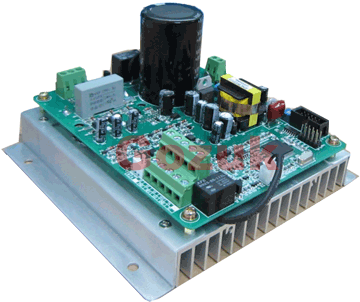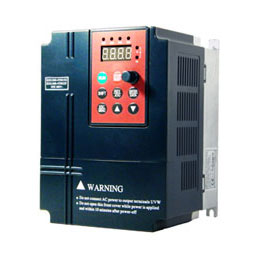Tag:
VFD installation
When you install a VFD on an electric motor that is driving critical equipment in your factory, building or farm etc you need to be confident that that equipment will perform regardless of the environment that it is installed in.
Critical to getting that level of performance from your VFD is making sure that the enclosure that has been used for your VFD is capable of protecting the vital components of the VFD from dust, dirt, particles, water and other liquids.
Critical to getting that level of performance from your VFD is making sure that the enclosure that has been used for your VFD is capable of protecting the vital components of the VFD from dust, dirt, particles, water and other liquids.
Tags: VFD installation
There are many important considerations for all industrial electronic equipment; however, the two most important are cooling and line power quality.
1) Cooling: variable frequency drive control units should be installed in locations where the maximum ambient temperature does not exceed 40 [degrees] C (104 [degrees] F). This is a common temperature rating for most units. If higher ambients are expected, derating of the variable frequency drive may be required.
You should avoid installing units in mezzanines, direct sunlight, or near external heat sources because these locations usually have unpredictable temperature rises. If you must install variable frequency drives in such areas, take steps to provide necessary cooling.
Proper cooling of the variable frequency drive's heat sink is essential for successful operation. Wall-mounted units employ a "chimney effect" for cooling of the heat sink and must be mounted against a smooth, flat, vertical surface. If a wall-mounted unit is to be installed in a free-standing position, then plywood or a sheet of metal should be fastened to the back of the unit to ensure that chimney-effect cooling will be achieved. Larger free-standing variable frequency drives require minimum clearances around them for sufficient air flow to circulate through them, assuring adequate cooling.
Altitude affects the heat dissipation capability of the heat sink and units in locations at 3300 ft (1000 m) above sea level must be derated. A common rule of thumb is a 2% derating for every 1000 ft above the 3300 ft altitude level.
2) Supply line power quality: The line voltage (supply) to the VFD input should not vary plus or minus 10% because most VFDs will trip via a protective fault. This voltage stability should be considered when running conductors to the VFD and voltage drops should be calculated for long runs.
Very often external control signals are used to start/stop and control the speed of a variable frequency drive. Control signal types can vary depending on the application. It's not unusual to have a 115V or 24V control circuit for start commands and a 4-20mA or 0-5VDC signal for speed control. These control signals must be run independently of each other as well as separate from any power wiring. Induced noises can produce erratic VFD behavior that is very difficult to troubleshoot.
1) Cooling: variable frequency drive control units should be installed in locations where the maximum ambient temperature does not exceed 40 [degrees] C (104 [degrees] F). This is a common temperature rating for most units. If higher ambients are expected, derating of the variable frequency drive may be required.
You should avoid installing units in mezzanines, direct sunlight, or near external heat sources because these locations usually have unpredictable temperature rises. If you must install variable frequency drives in such areas, take steps to provide necessary cooling.
Proper cooling of the variable frequency drive's heat sink is essential for successful operation. Wall-mounted units employ a "chimney effect" for cooling of the heat sink and must be mounted against a smooth, flat, vertical surface. If a wall-mounted unit is to be installed in a free-standing position, then plywood or a sheet of metal should be fastened to the back of the unit to ensure that chimney-effect cooling will be achieved. Larger free-standing variable frequency drives require minimum clearances around them for sufficient air flow to circulate through them, assuring adequate cooling.
Altitude affects the heat dissipation capability of the heat sink and units in locations at 3300 ft (1000 m) above sea level must be derated. A common rule of thumb is a 2% derating for every 1000 ft above the 3300 ft altitude level.
2) Supply line power quality: The line voltage (supply) to the VFD input should not vary plus or minus 10% because most VFDs will trip via a protective fault. This voltage stability should be considered when running conductors to the VFD and voltage drops should be calculated for long runs.
Very often external control signals are used to start/stop and control the speed of a variable frequency drive. Control signal types can vary depending on the application. It's not unusual to have a 115V or 24V control circuit for start commands and a 4-20mA or 0-5VDC signal for speed control. These control signals must be run independently of each other as well as separate from any power wiring. Induced noises can produce erratic VFD behavior that is very difficult to troubleshoot.
Tags: VFD installation
Variable frequency drive on HVAC Chiller
Installation of a variable frequency drive on an existing chiller.
Installation of a variable frequency drive on an existing chiller.
- Installation of the variable frequency drive must accompany the permanent removal or disabling of existing flow control devices.
- New chillers with integrated variable frequency drives may be eligible under the Air-Cooled and Water-Cooled Chiller incentive.
- variable frequency drives installed on new equipment are not eligible for this incentive.
Tags: VFD installation
Featured Articles
Non-Enclosure Variable Frequency Drive ...
 No enclosure (cover), reducing installation space and cost effective. Widely used in All-In-One control cabinet. Keep the same ...
No enclosure (cover), reducing installation space and cost effective. Widely used in All-In-One control cabinet. Keep the same ...
 No enclosure (cover), reducing installation space and cost effective. Widely used in All-In-One control cabinet. Keep the same ...
No enclosure (cover), reducing installation space and cost effective. Widely used in All-In-One control cabinet. Keep the same ...Variable frequency drive application ...
 Variable Frequency Drive (VFD) can be used in lots of fields. Variable frequency drives are widely used to control the speed of ...
Variable Frequency Drive (VFD) can be used in lots of fields. Variable frequency drives are widely used to control the speed of ...
 Variable Frequency Drive (VFD) can be used in lots of fields. Variable frequency drives are widely used to control the speed of ...
Variable Frequency Drive (VFD) can be used in lots of fields. Variable frequency drives are widely used to control the speed of ...Variable frequency drive in HVAC ...
 Variable frequency drives (VFD) have been used for HVAC systems in buildings for more than 40 years. But only in recent years, ...
Variable frequency drives (VFD) have been used for HVAC systems in buildings for more than 40 years. But only in recent years, ...
 Variable frequency drives (VFD) have been used for HVAC systems in buildings for more than 40 years. But only in recent years, ...
Variable frequency drives (VFD) have been used for HVAC systems in buildings for more than 40 years. But only in recent years, ...Variable Frequency Drive Harmonics and ...
A discussion of the benefits of variable frequency drives often leads to a question regarding electrical harmonic distortion ...
Three phase inverters
 In the variable frequency drive rectifier paper, it explains how to go from three phase alternating current voltage to a direct ...
In the variable frequency drive rectifier paper, it explains how to go from three phase alternating current voltage to a direct ...
 In the variable frequency drive rectifier paper, it explains how to go from three phase alternating current voltage to a direct ...
In the variable frequency drive rectifier paper, it explains how to go from three phase alternating current voltage to a direct ...
VFD manufacturers
